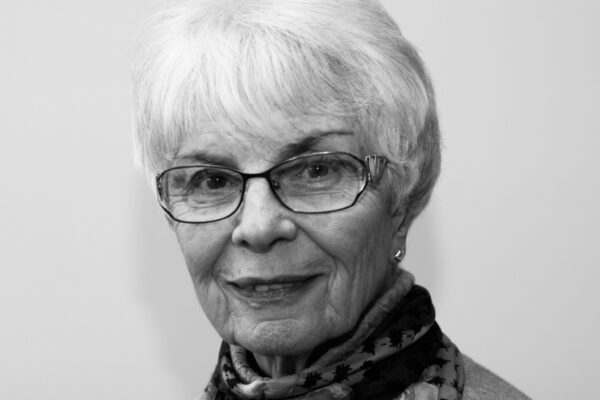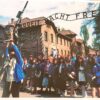
Imre Kertesz, a Nobel laureate who was acclaimed for his semi-autobiographical novels on surviving the Holocaust and its aftermath, died on Thursday at his home in Budapest. He was 86.
His death was confirmed by Krisztian Nyary, the head of Magveto Publishing, which publishes Mr. Kertesz’s works in his native Hungary. Mr. Nyary said Mr. Kertesz had been struggling with a chronic illness.
What set Mr. Kertesz apart from other writers on the Holocaust was his insistence on describing the death camps at Auschwitz and Buchenwald without outrage, especially in his definitive work, “Fateless,” first published in 1975.
“The novel uses the alienating device of taking the reality of the camp completely for granted, an everyday existence like any other,” the Swedish Nobel committee said in awarding him its 2002 prize in literature.
Mr. Kertesz seemed dumbfounded by his Nobel Prize, which came after he had spent decades in near anonymity, even in Hungary. He had a small but intensely loyal following in Germany, France and Scandinavia, but only two of his novels, “Fateless” and “Kaddish for an Unborn Child” (1990), had been published in English when he received the award.
Imre Kertesz (roughly pronounced EEM-er-eh CARE-tiss) was born in Budapest on Nov. 9, 1929, to secular Jewish parents and grew up as a nonobservant Jew. His death camp internment, however, “obliged me to be Jewish,” he said in a 2001 interview with the Spanish newspaper El País.
“I accept it,” he added, “but to a large extent it is also true that it was imposed on me.”
While Mr. Kertesz urged readers and critics not to assume that the events recounted in “Fateless” were autobiographical, the novel contains strong parallels to his own experiences. At age 14, on his way to school, he was — like Gyuri Koves, the teenage protagonist of “Fateless’’ — caught in a Hungarian police dragnet in 1944 and deported along with thousands of other Budapest Jews, first to Auschwitz and then to Buchenwald.
Following the advice of older camp inmates, the young Kertesz, also like the fictional Koves, claimed to be a 16-year-old worker rather than a student. That made him old enough to qualify for forced labor, saving him from immediate extermination as a child.
A macabre reminder of this successful ruse surfaced when Mr. Kertész was preparing his Nobel acceptance speech. He received a large brown envelope in the mail from the director of the Buchenwald Memorial Center. Enclosed, besides a congratulatory note, was a routine report, compiled by the Buchenwald camp authorities and dated Feb. 18, 1945, listing the names of inmates who had died that day. One notation read: “Imre Kertesz, factory worker, born in 1927.”
“In short,” Mr. Kertész said in his Nobel speech, “I died once, so I could live.”
When the United States Army liberated Buchenwald in May 1945, several American soldiers urged Mr. Kertesz to emigrate to the United States. But he declined. “I couldn’t imagine going anywhere except home,” he told The New York Times in 2006. “I was like a stray dog.”
Mr. Kertesz returned to a country that was under Soviet occupation and rising Communist influence. He began working as a journalist for a Budapest newspaper but was fired in 1951, two years after the Communists seized power in Hungary, because he refused to lionize the new regime.
He then became a translator of German-language authors, including Nietzche, Freud and Wittgenstein, but lost this income source when he decided to write fiction. “I could not take up a career as a novelist because I would be considered unemployed and sent to a labor camp,” he said in a 2005 interview with Smithsonian magazine. “Instead, I became a blue-collar laborer and wrote at night.”
Mr. Kertesz took 13 years to complete “Fateless,” his first novel, in 1965, but it was not published until a decade later. (A new English translation was published in 2004 as “Fatelessness.”) While it received attention in West Germany, it was virtually ignored in Hungary.
More nuanced — and for that reason often more disturbing — than previous Holocaust literature, “Fateless” describes a concentration camp atmosphere in which inmates are shockingly detached and complacent, preoccupied with resolving practical problems rather than venting anger or plotting resistance.
“I experienced my most radical moments of happiness in the concentration camp,” Mr. Kertesz said in a 2002 interview with Newsweek. “You cannot imagine what it’s like to be allowed to lie in the camp’s hospital, or to have a 10-minute break from indescribable labor. To be very close to death is also a kind of happiness. Just surviving becomes the greatest freedom of all.”
In “Kaddish for an Unborn Child,” Mr. Kertesz continued his semi-autobiograpical reflections on the impact of the death camps on his life.
“Auschwitz has been hanging around in the air since long ago,” he wrote (as translated by Tim Wilkinson), “who knows, perhaps for centuries, like dark fruit ripening in the sparkling rays of innumerable disgraces, waiting for the moment when it may at last drop on mankind’s head.”
The novel is addressed to the child the narrator refused to have because “what happened to me, my childhood, must never happen to another child.”
In “Liquidation” (2003), his first novel published after the Nobel ceremony, a Budapest book publisher and editor seeks the lost masterpiece of a man, identified only as B., who, like Mr. Kertesz, was a writer, translator and Holocaust survivor, and who committed suicide. The novel revealed a warm, sensual side largely absent from the rest of Mr. Kertesz’s work.
In a vignette in Budapest’s cavernous Central Market Hall, B. waits his turn to buy vegetables. His former lover, Sarah, shopping nearby, sees him with his hands clasped behind his back. “She sneaked up behind him and suddenly slipped her hand into B.’s open palm,” Mr. Kertesz wrote. “Instead of turning around (as Sarah had intended), B. had folded the woman’s hand tenderly, like an unexpected secret gift, in his warm, bare hand, and Sarah had felt a sudden thrill of passion from that grip.”
Reviewing “Liquidation” in The New York Times Book Review in 2004, the critic Ruth Franklin wrote, “Not since Kafka and Beckett … has a writer packed so much metaphysics into so tight a space.”
From the 1990s until his death, Mr. Kertesz divided his time between Budapest and Berlin, where he had resumed making a living as a translator before achieving literary success. His second wife, Magda, who survives him, is Hungarian but lived in Chicago for 33 years and often served as his translator in interviews with the foreign press.
A year after winning the Nobel Prize, Mr. Kertesz finally attained recognition in Hungary, with his books selling some 500,000 copies altogether — about one for every 20 Hungarians. “But at the same time, there were many protest letters from Hungarians to the Nobel committee in Sweden,” he said. “Most objections were about my being Jewish.”
Literary recognition also led to the publication in English of three earlier novels. In “Detective Story” (1977), rather than take the victim’s point of view, Mr. Kertesz recounts the prison confessions of a secret police torturer. “The Pathseeker” (1977) tells the story of an unnamed “commissioner” in an unnamed Central European country who interrogates inhabitants of a community with no clear purpose except to seed terror. “The Union Jack” (1991) revolves around an incident linked to a British flag during the failed 1956 Hungarian uprising against Communist rule.
But all his novels, Mr. Kertesz acknowledged, were inspired either directly or indirectly by the insanities and cruelties of the concentration camps.
“It is often said of me — some intend it as a compliment, others as a complaint — that I write about a single subject: the Holocaust,” he said in his Nobel acceptance speech. “What I discovered in Auschwitz is the human condition, the end point of a great adventure, where the European traveler arrived after his 2,000-year-old moral and cultural history.”
Originally published HERE.








